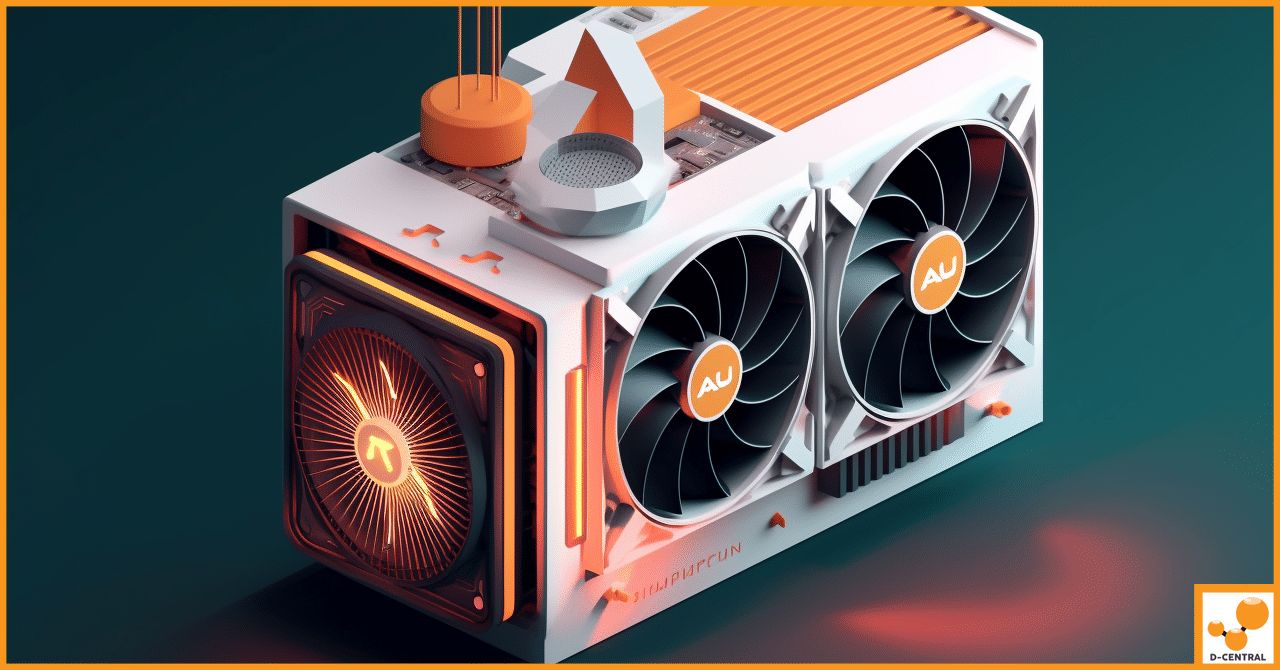
Home Bitcoin Mining and Energy Storage: Integrating Battery Systems
Discover how D-Central Technologies is revolutionizing home Bitcoin mining with innovative solutions that combine energy efficiency, sustainability, and profitability. Learn
4479 Desserte Nord Autoroute 440, Laval, QC H7P 6E2

In the rapidly evolving world of cryptocurrency mining, Application-Specific Integrated Circuit (ASIC) miners have emerged as the cornerstone of mining operations, heralding a new era of efficiency and profitability. These specialized devices are engineered to perform the singular task of mining cryptocurrencies, such as Bitcoin, with unparalleled precision and speed. Unlike their predecessors—CPUs, GPUs, and FPGAs—ASIC miners offer a quantum leap in hashing power and energy efficiency, making them indispensable for miners aiming to stay competitive in the high-stakes arena of digital currency.
However, the reliance on ASIC technology introduces a critical vulnerability: hardware failures. These failures, ranging from thermal stress and power supply issues to hash board malfunctions and firmware glitches, can significantly disrupt mining operations. The impact of such hardware failures on ASIC maintenance is profound, affecting not only the immediate mining output but also the long-term viability and profitability of mining ventures. In a domain where every second counts, downtime is a costly adversary.
Addressing hardware failures promptly and effectively is not merely a matter of operational upkeep; it is a strategic imperative. The efficiency of ASIC miners, while their greatest asset, also renders them susceptible to a host of issues that can compromise their performance. Recognizing the signs of potential failures, understanding their causes, and implementing a robust maintenance strategy are essential steps in safeguarding the heart of cryptocurrency mining operations. This approach not only ensures the longevity and productivity of the mining hardware but also secures the financial investment and future profitability of mining enterprises.
As we delve deeper into the nuances of ASIC hardware failures and their impact on maintenance, it becomes clear that the key to sustaining mining efficiency lies in a proactive, knowledgeable approach to hardware management. In this context, the expertise and services offered by industry leaders like D-Central Technologies become invaluable, providing miners with the support and solutions needed to navigate the complexities of ASIC maintenance and repair.
The robustness of ASIC miners, while a boon for cryptocurrency mining, is not without its Achilles’ heel. Understanding the common types of hardware failures and their underlying causes is crucial for maintaining operational efficiency and prolonging the lifespan of these mining powerhouses.
The causes of ASIC hardware failures often boil down to environmental conditions and operational practices that fall short of the ideal. Poor ventilation, resulting in inadequate air flow around the device, exacerbates the issue of thermal stress and overheating. Similarly, inadequate maintenance, such as failing to clean dust and debris from the miners, can clog cooling systems and reduce their effectiveness. Power supply issues often originate from using substandard power units or operating the miners in environments with unstable electrical supplies.
The consequences of these failures range from immediate to long-term impacts on mining operations:
Understanding these common failures and their repercussions is the first step in developing a comprehensive maintenance strategy that minimizes downtime, reduces operational costs, and maintains, if not enhances, the efficiency of ASIC mining operations.
Effective diagnosis of ASIC hardware failures is pivotal in minimizing downtime and ensuring the longevity of mining operations. Recognizing the early signs of failure and employing the right diagnostic tools can significantly reduce the impact of these issues.
Early detection of hardware failures in ASIC miners can often prevent minor issues from escalating into major problems. Here are key signs and symptoms to watch for:
Monitoring these signs requires a combination of manual inspections and the use of software tools designed to track and analyze mining performance.
Diagnosing ASIC hardware failures involves a systematic approach, utilizing both hardware and software diagnostic tools:
Step-by-Step Guide on Diagnosing Common Issues:
By systematically applying these tools and techniques, miners can effectively diagnose and address hardware failures, reducing downtime and maintaining optimal mining operations.
Preventative maintenance is key to maximizing the lifespan and efficiency of ASIC miners. By implementing routine maintenance best practices and optimizing environmental conditions, miners can significantly reduce the risk of hardware failures and ensure continuous, profitable mining operations.
Schedule for Cleaning and Inspections: Dust and debris accumulation is a common cause of overheating and component failure in ASIC miners. Establishing a regular cleaning schedule is essential to maintain airflow and cooling efficiency. Inspections should focus on the integrity of cooling fans, the cleanliness of air filters, and the condition of electrical connections to prevent corrosion or wear.
Firmware Updates and Software Management: Keeping the miner’s firmware and software up to date is crucial for security, efficiency, and compatibility.
The mining environment plays a critical role in the performance and longevity of ASIC miners. Proper management of temperature and humidity is vital to prevent hardware degradation.
Importance of Optimal Operating Conditions:
Solutions for Improving the Mining Environment:
By adhering to these preventative maintenance strategies, miners can safeguard their ASIC hardware against common failures, optimize mining performance, and extend the operational lifespan of their equipment.
When ASIC miners encounter hardware failures, operators are faced with a critical decision: repair the existing equipment or replace it with new hardware. This decision can significantly impact the operational efficiency and financial health of mining operations.
Factors to Consider When Deciding to Repair or Replace Hardware:
Cost-Benefit Analysis of Repair Services:
Performing a cost-benefit analysis involves comparing the immediate and long-term financial impacts of repairing versus replacing ASIC miners. This analysis should account for the repair costs, potential improvements in efficiency, the residual value of the hardware, and the projected return on investment (ROI) of new equipment.
Overview of D-Central Technologies’ Repair Services and Capabilities:
D-Central Technologies offers a comprehensive suite of ASIC repair services, designed to address a wide range of hardware issues efficiently and effectively. With a team of experienced technicians and state-of-the-art diagnostic tools, D-Central Technologies can diagnose and repair various types of hardware failures, including power supply issues, hash board failures, and cooling system malfunctions.
Case Studies Showcasing Successful Repair and Maintenance Interventions:
Through these repair services and successful interventions, D-Central Technologies not only helps mining operators minimize downtime and save costs but also reinforces its reputation as a leader in ASIC repair and maintenance solutions.
The ASIC mining industry is continually evolving, with new technologies and practices emerging to enhance the maintenance and repair of these critical devices. These innovations aim to extend the lifespan of ASIC miners, improve their efficiency, and reduce downtime, ensuring that mining operations remain profitable and sustainable.
Latest Advancements in ASIC Maintenance Technology:
Innovative Practices for Extending ASIC Lifespan and Efficiency:
Through its commitment to innovation and excellence, D-Central Technologies plays a pivotal role in advancing the field of ASIC maintenance and repair. By offering cutting-edge solutions and custom modifications, D-Central ensures that its clients’ mining operations remain competitive, efficient, and profitable in the ever-changing landscape of cryptocurrency mining.
The journey through the intricacies of ASIC hardware failures and the paramount importance of diligent maintenance underscores a fundamental truth in the realm of cryptocurrency mining: the health of your mining hardware directly influences your operational efficiency and, ultimately, your profitability. Understanding the common types of hardware failures, recognizing early signs of trouble, employing advanced diagnostic tools, and adhering to preventative maintenance strategies are all critical components of a robust mining operation.
The advent of emerging technologies and innovative practices in ASIC maintenance and repair offers promising avenues to not only address but also preempt hardware issues, extending the lifespan of these essential devices and enhancing their efficiency. In this dynamic landscape, the role of expert maintenance services cannot be overstated. Specialized knowledge, experience, and access to cutting-edge solutions are invaluable assets in navigating the complexities of ASIC maintenance, ensuring that mining operations can achieve and sustain peak performance.
D-Central Technologies emerges as a pivotal ally in this endeavor. With its comprehensive suite of ASIC repair services, commitment to innovation, and custom solutions designed to meet the unique needs of each client, D-Central Technologies stands ready to support miners in maximizing their operational efficiency and profitability. Whether you’re facing immediate hardware issues or seeking to implement proactive maintenance strategies, D-Central’s team of experts is equipped to provide the guidance and services you need to succeed.
We encourage all miners, from novices to seasoned veterans, to consult with D-Central Technologies for their ASIC maintenance needs. By partnering with D-Central, you can ensure that your mining hardware remains in optimal condition, poised to capitalize on the opportunities of the cryptocurrency market.
For more information on D-Central Technologies’ services and to get in touch with their team of experts, visit their website at D-Central Technologies or contact them directly through their support channels. Together, let’s navigate the challenges of ASIC maintenance and repair, and drive your mining operations towards greater profitability and success.
What is an ASIC miner?
An ASIC (Application-Specific Integrated Circuit) miner is a specialized device engineered to mine cryptocurrencies like Bitcoin with high precision and speed. It offers significant advantages in hashing power and energy efficiency over previous mining hardware such as CPUs, GPUs, and FPGAs.
What are common hardware failures in ASIC miners?
Common hardware failures include thermal stress and overheating, power supply issues, hash board failures, and firmware glitches. These can significantly impact mining operations by causing downtime and reducing the miner’s efficiency and effectiveness.
Why is understanding ASIC hardware failures important?
Understanding ASIC hardware failures is crucial for maintaining operational efficiency and prolonging the lifespan of the mining hardware. It ensures the longevity and productivity of the mining operation and secures the financial investment into the venture.
How can one diagnose ASIC hardware failures?
Diagnosing ASIC hardware failures involves early detection of issues through monitoring error rates, temperature fluctuations, unusual noise, reduced hash rate, and unexpected reboots. Tools like built-in diagnostic features, thermal imaging cameras, and mining management software are critical in this process.
What are preventative maintenance strategies for ASIC miners?
Preventative maintenance includes regular cleaning and inspections, firmware updates, and managing environmental conditions like temperature and humidity. Implementing cooling systems and maintaining optimal operating conditions are vital to reducing the risk of hardware failures.
Should I repair or replace faulty ASIC hardware?
The decision to repair or replace depends on factors like the hardware’s age, repair costs, downtime, performance after repair, and availability of warranty and support for new hardware. Cost-benefit analysis can help determine the most economical and efficient choice.
What services does D-Central Technologies offer for ASIC repair?
D-Central Technologies offers a comprehensive set of ASIC repair services including diagnostic services, component-level repairs, firmware updates, and configuration optimization. They also offer warranties on repairs, providing assurance of quality service.
What innovations are emerging in ASIC maintenance and repair?
Innovations include automated diagnostic tools, advanced cooling solutions, blockchain-based maintenance logs, modular design for easy component replacement, and predictive maintenance utilizing data analytics and machine learning to preempt hardware failures.
Why is expert ASIC maintenance service important?
Expert ASIC maintenance services, like those provided by D-Central Technologies, offer specialized knowledge, experience, and access to cutting-edge solutions. These are essential for navigating ASIC maintenance complexities, ensuring optimal operational efficiency and profitability of mining operations.
DISCLAIMER: D-Central Technologies and its associated content, including this blog, do not serve as financial advisors or official investment advisors. The insights and opinions shared here or by any guests featured in our content are provided purely for informational and educational purposes. Such communications should not be interpreted as financial, investment, legal, tax, or any form of specific advice. We are committed to advancing the knowledge and understanding of Bitcoin and its potential impact on society. However, we urge our community to proceed with caution and informed judgment in all related endeavors.
Related Posts

Discover how D-Central Technologies is revolutionizing home Bitcoin mining with innovative solutions that combine energy efficiency, sustainability, and profitability. Learn

When we step into the digital frontier of Bitcoin mining, we immerse ourselves in an activity of paramount significance. Bitcoin

In the ever-evolving landscape of digital currencies, the significance of crypto mining hosting has become increasingly paramount. At the heart